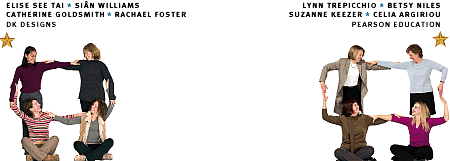2002
Last year, to achieve the earnings rebound, we relied on all those attributes of
Pearson to get the job done.
We were helped in our profit improvement by cost reductions, lower internet
losses and lower interest charges (because we paid off some debt when we sold
our television business). We were hurt by the weaker dollar, and, of course, by
the advertising environment.
Since 1997 we have measured our success three ways - sales, margins and cash. In
2002, we began to work even harder on cash and, with a special emphasis on
managing our working capital, we were able to increase our operating free cash
flow by 29%.
Good competitive performances 
We gained significant shares in four of our biggest markets: higher education,
consumer publishing, asset valuation and government services. We made modest
gains in most of our other markets, too. The only market where we lost share
slightly was in US schools, and that was because we decided to sit out of
bidding for some school book opportunities we thought would be unprofitable for
us.
Aggressive cost management and asset allocation 
We had to reduce spending across Pearson, especially in our business newspapers
and in technology publishing, areas hit hard by the recession in advertising and
in technology. We also began to see the early investment costs of new businesses
come down, particularly those reliant on the internet. As we managed costs, we
tried to balance the risks and the rewards. We did not treat people as
sacrifices to be made for financial markets that wanted the short-term to be
better.
Continued investment 
At the same time we cut costs, we invested. We put more than £250m into new
product development, which will sustain our top-line in the future. And we spent
£30m integrating our businesses and their shared functions in ways that will add
to our bottom line in the years to come.
|








